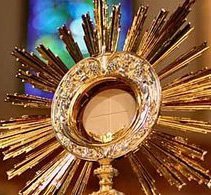 Yesterday, 7 October, one of the Episcopal Church's 20th centruy icons died. I do not want his death to go unnoticed. Today's post is the article that appeared in yesterday's Washington Post.
Yesterday, 7 October, one of the Episcopal Church's 20th centruy icons died. I do not want his death to go unnoticed. Today's post is the article that appeared in yesterday's Washington Post.Francis B. Sayre Jr., who as dean of Washington National Cathedral for 27 years oversaw much of its completion and used his pulpit to confront McCarthyism, racial tensions and the Vietnam War, died Oct. 3 at his home on Martha's Vineyard, Mass. He was 93 and had diabetes.
Sayre, whose grandfather was President Woodrow Wilson, was appointed to the cathedral in 1951 and quickly became a leading national voice of conscience. As the church's fifth dean, he also presided over daily operations and focused on finishing the massive Gothic structure whose cornerstone had been placed in 1907.
Washington National Cathedral is now the sixth-largest cathedral in the world and is often regarded as America's counterpart to England's Westminster Abbey as a national center for mourning and celebration. Attracting thousands of followers, Sayre continued the cathedral's tradition of preaching the social gospel, which applies Christian ethics to matters such as war, race relations and economic inequality.
"Whoever is appointed the dean of the cathedral," he told The Washington Post in 1977, "has in his hand a marvelous instrument and he's a coward if he doesn't use it."
From the pulpit, he denounced the tactics of Sen. Joseph R. McCarthy at the Wisconsin senator's peak of influence investigating Communist influence in government and Hollywood. He called McCarthy part of a crew of "pretended patriots" and also chided the American people for letting demagogues achieve prominence.
"There is a devilish indecision about any society that will permit an impostor like McCarthy to caper out front while the main army stands idly by," he said in a 1954 sermon.
His criticism of politicians extended to presidential candidates, and he once likened Lyndon B. Johnson's ethical foundations to a termite-ridden house. He did not spare other preachers, reproaching evangelist Billy Graham for overemphasizing personal spiritual renewal and not sufficiently addressing the need for social reform.
"The salvation of the world doesn't come about by arithmetic," he said, referring to the mass gatherings hosted by Graham. "There is a dimension to sin that goes beyond the individual."
Sayre spoke out on the injustice of school segregation in 1953, a year before the U.S. Supreme Court declared racially segregated public schools unlawful. He went on to champion home rule in the District in the early 1960s, saying the matter was less about race than maintaining the self-interest of an "oligarchy" led by businessmen who create "apathy and indifference to real social and civic concerns" by denying citizens a vote.
He was later elected to President John F. Kennedy's Committee on Equal Opportunity and was among a group of several leading Washington-area clergymen to accompany the Rev. Martin Luther King Jr. on his 1965 voting rights march in Selma, Ala.
He spent a decade campaigning for King to speak at the cathedral before prevailing. King gave what became his last Sunday sermon -- a speech favoring civil rights and world peace -- before being assassinated in Memphis in April 1968.
During subsequent years, he opened the cathedral to often-raucous youth religious Masses and antiwar protests. He allowed conductor Leonard Bernstein to lead a free "counter-inaugural" concert in January 1973 against the reelected President Richard M. Nixon. If Sayre was generally seen as a friend of progressives, he was at least temporarily abandoned by many of them when his 1972 Palm Sunday sermon about the "moral tragedy of mankind" sharply criticized Israel for "oppressing" Arab residents of Jerusalem.
Sayre's career addressing social challenges was not a lonely crusade. He found support for his causes from many pulpits across the country. His prominence and eloquence made him one of the church's leading figures of the period, said James D. Anderson, a retired Episcopal priest who worked at the cathedral from the late 1960s to the late 1980s.
Sayre's legacy was also in the building itself. Although not officially completed until 1990, the cathedral's bell tower and nave were finished on his watch. So were a majority of the stained-glass windows, including one containing a moon rock from the Apollo 11 mission.
Trying to rush the construction for the bicentennial celebrations, however, left the church in heavy debt.
Francis Bowes Sayre Jr. was born Jan. 17, 1915, in the White House. He was the fourth grandchild of President Wilson and the first-born of Wilson's daughter Jessie, who died in 1933.
.jpg)






|